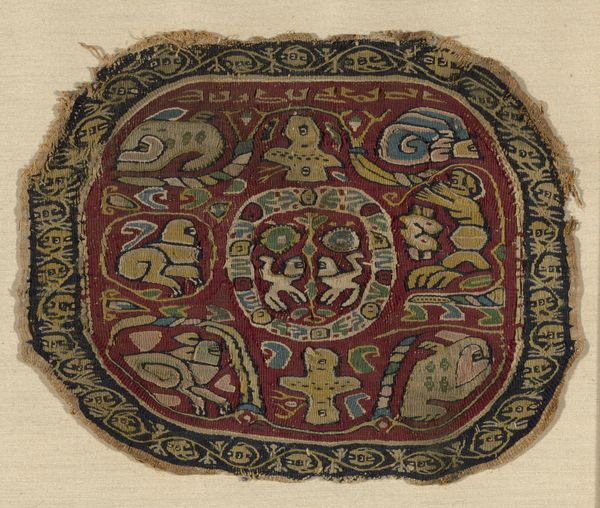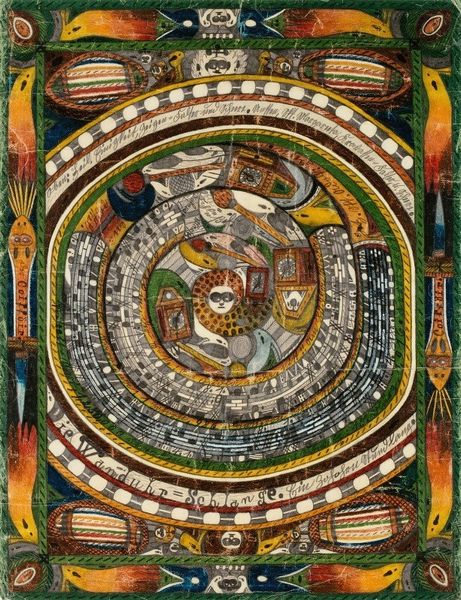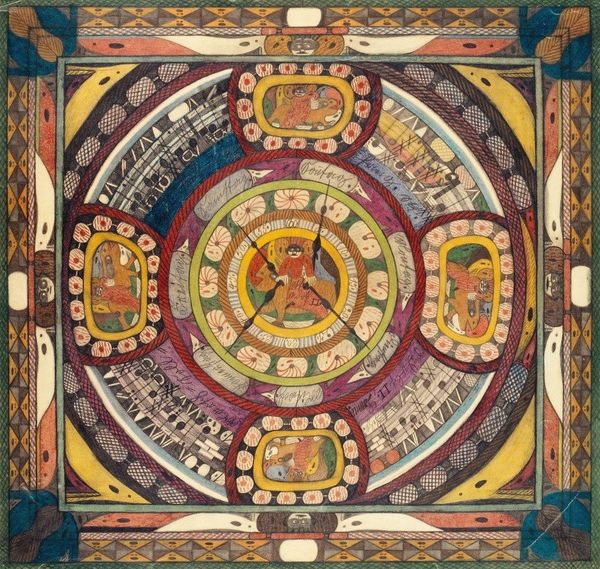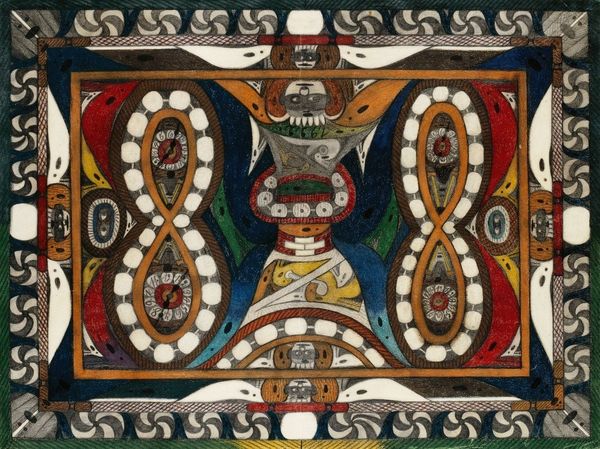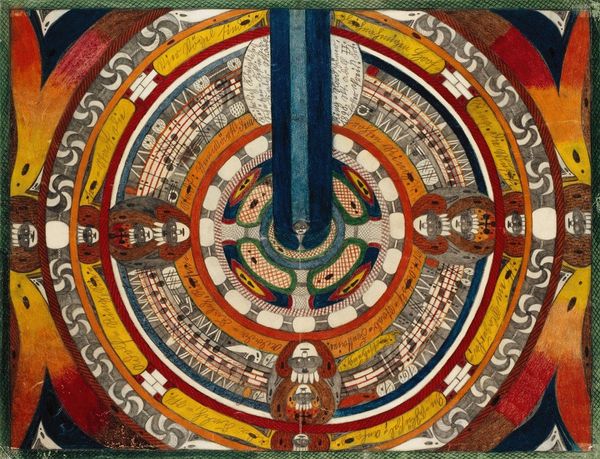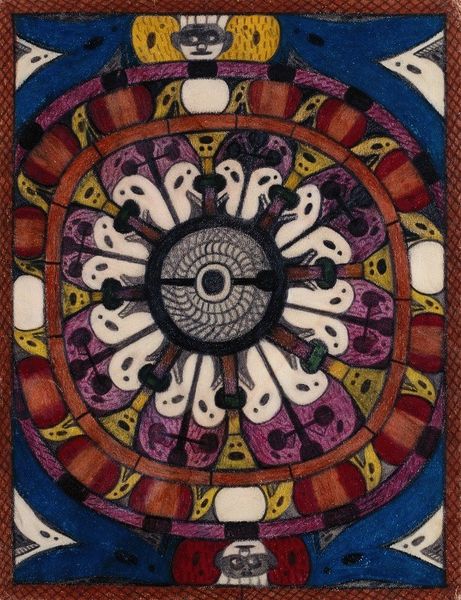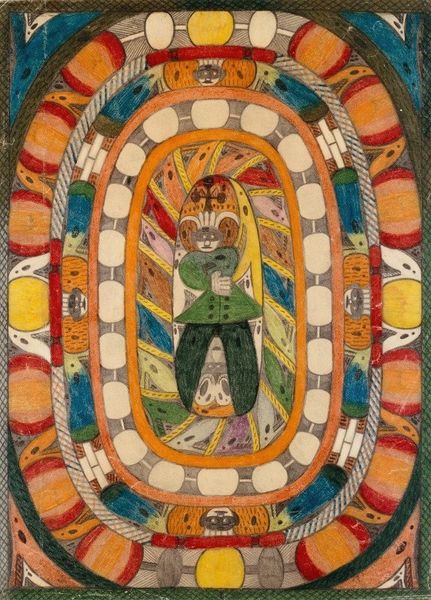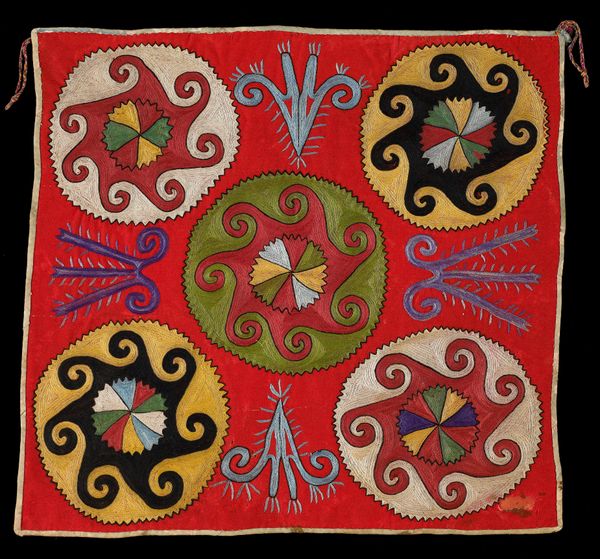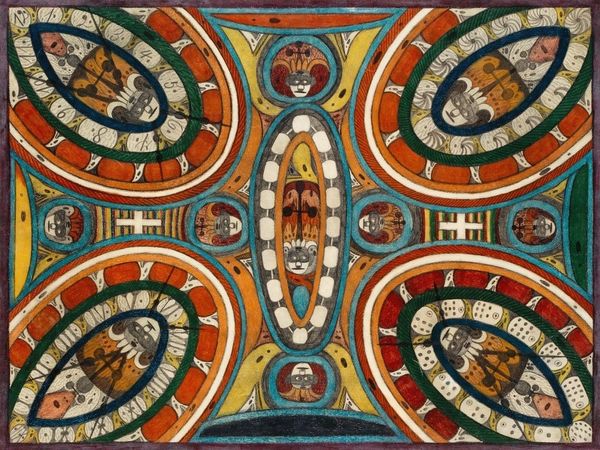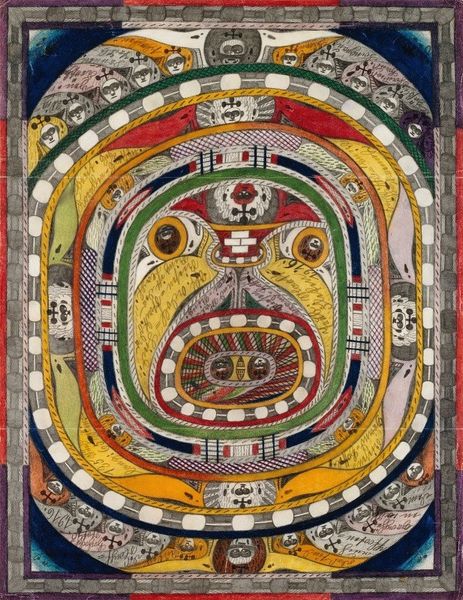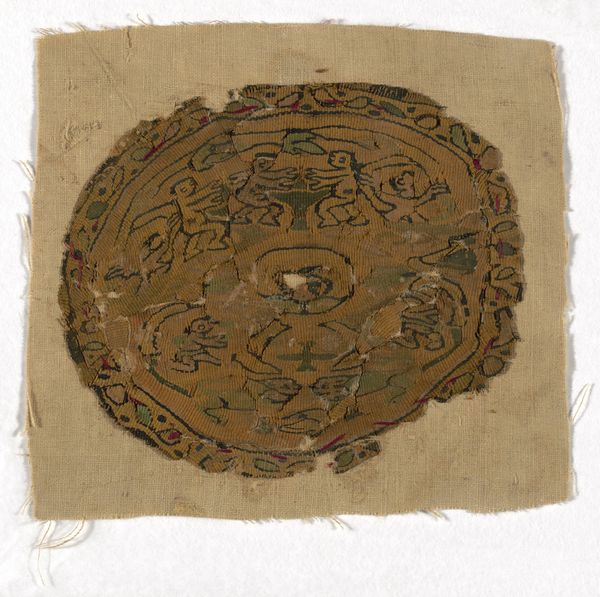
drawing, pencil
#
drawing
#
outsider-art
#
abstract
#
geometric
#
pencil
#
abstraction
Copyright: Public Domain: Artvee
Editor: Here we have Adolf Wölfli's "China," made in 1922 using pencil and drawing techniques. The geometric and abstract nature of the work creates a very contained, almost claustrophobic feel. How do you interpret this piece, given its title and its intense, repetitive imagery? Curator: Wölfli, often categorized as an outsider artist, compels us to reconsider the very boundaries of what we deem "art." Given his biography and the context of his mental institution stay, "China," in my view, could represent a deeply personal, even perhaps, a critical reflection on systems of power. Do you see any symbolism within the composition? Editor: Well, the concentric circles and the repeated motifs might symbolize cycles, perhaps those within his own life or within larger social structures. The figure at the center almost seems trapped. Curator: Precisely! Think about the historical context. Post-World War I, a period of immense social upheaval and questioning of authority. Could this be Wölfli's commentary on control, on the societal forces that led to his confinement, or even a wider critique of colonialism symbolized by the title "China"? Editor: I hadn't considered it that way. I was more focused on the personal and psychological aspects, but I can definitely see a potential for a broader social reading here, relating to power structures and marginalization. Curator: His mental state must also be considered. As such, the symbolic reading of "China" allows us a way of approaching complex topics and historical trauma with great reflexivity. I'm glad we looked at this one today. Editor: This perspective adds a whole new layer to my understanding. It shows how deeply intertwined personal expression and social critique can be in art, especially when engaging with artists on the margins.
Comments
No comments
Be the first to comment and join the conversation on the ultimate creative platform.

